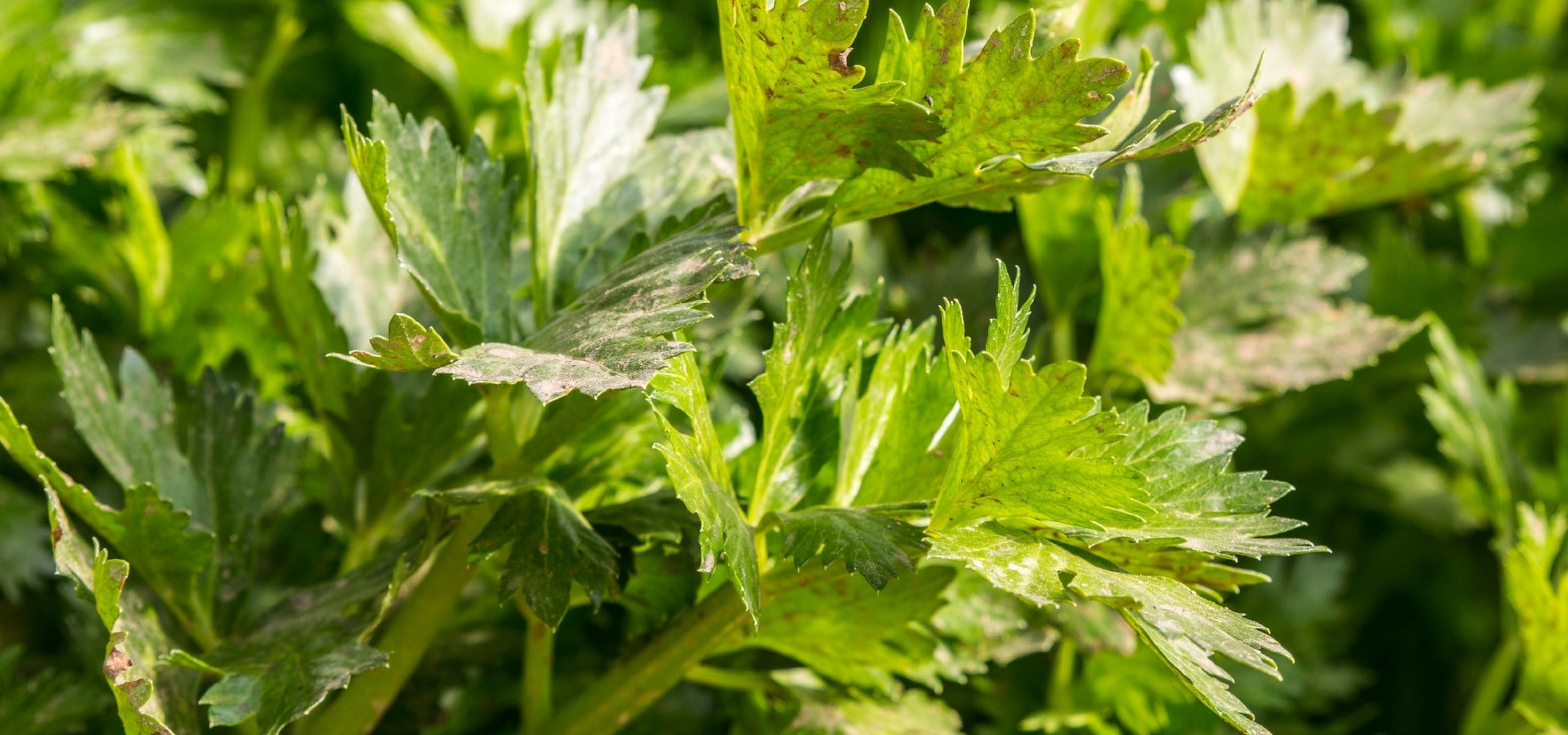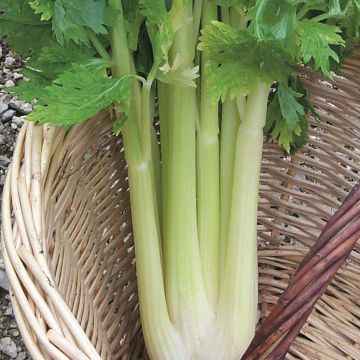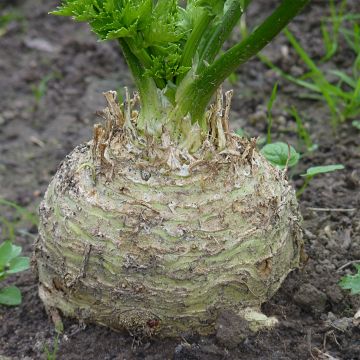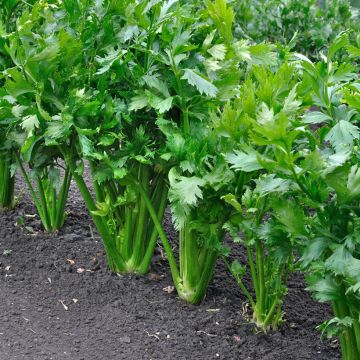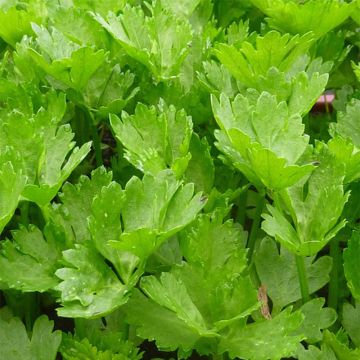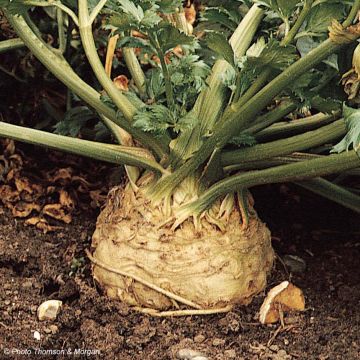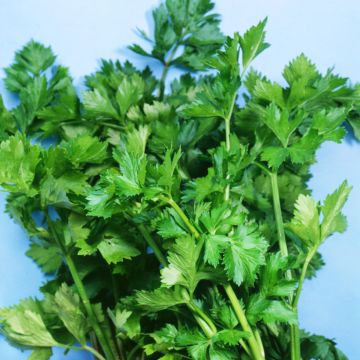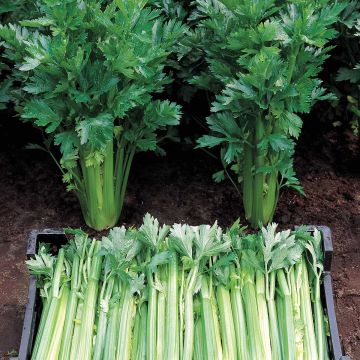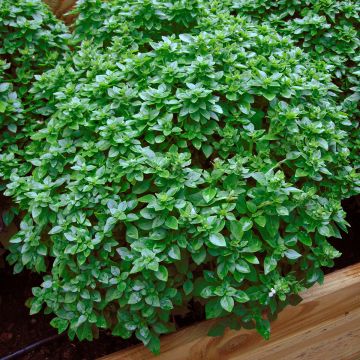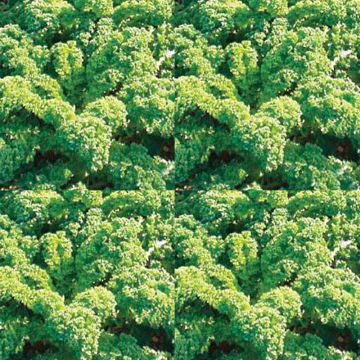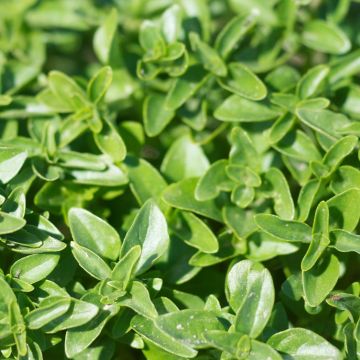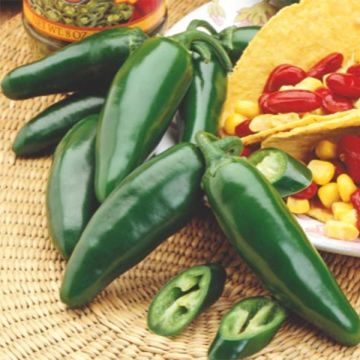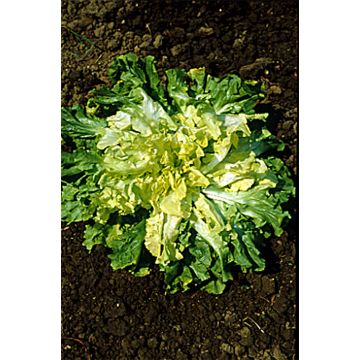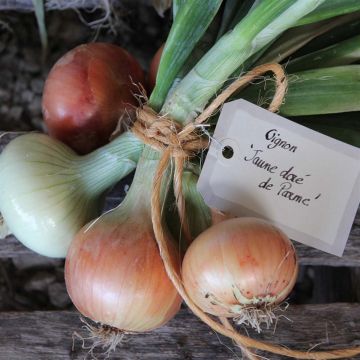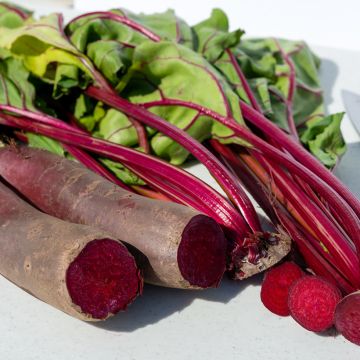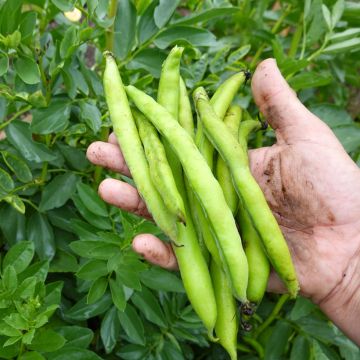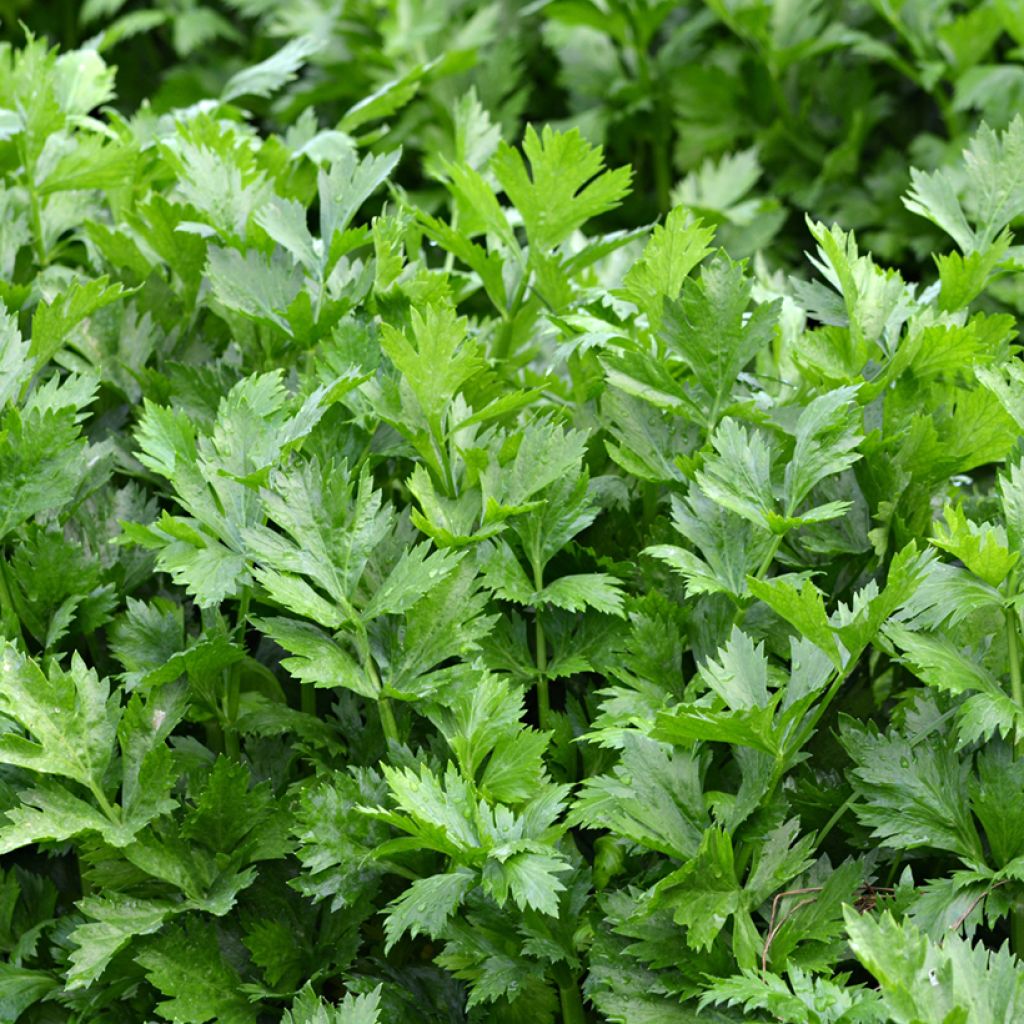

Westlandse dark green cutting Celery - Apium graveolens
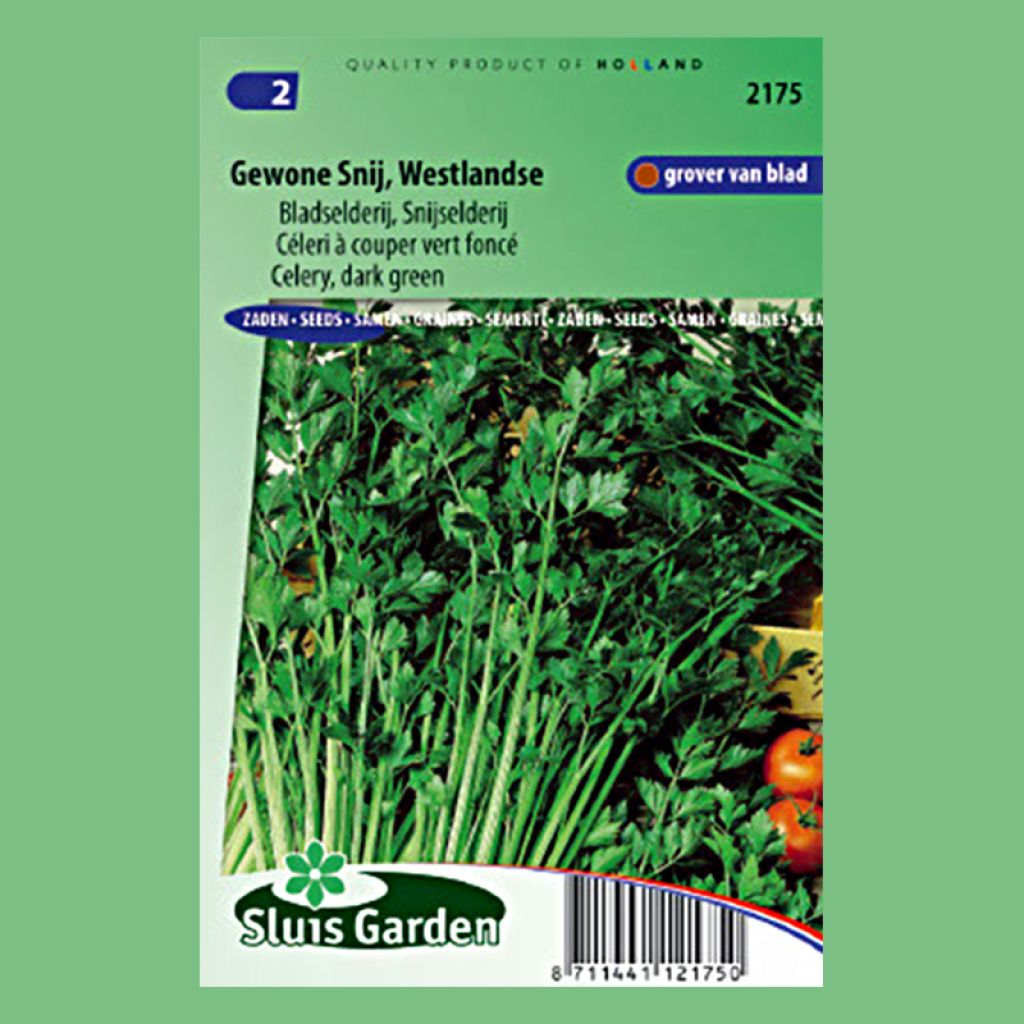

Westlandse dark green cutting Celery - Apium graveolens
Westlandse dark green cutting Celery - Apium graveolens
Apium graveolens Westlandse
Celery
Well! I sowed hundreds of seeds, in buckets indoors and in the ground outdoors, young shoots very delicate to survive, but I still got 7 plants with a few small branches (20 cm), not much yield but very good flavor.
WD, 05/10/2024
Special offer!
Receive a €20 voucher for any order over €90 (excluding delivery costs, credit notes, and plastic-free options)!
1- Add your favorite plants to your cart.
2- Once you have reached €90, confirm your order (you can even choose the delivery date!).
3- As soon as your order is shipped, you will receive an email containing your voucher code, valid for 3 months (90 days).
Your voucher is unique and can only be used once, for any order with a minimum value of €20, excluding delivery costs.
Can be combined with other current offers, non-divisible and non-refundable.
Home or relay delivery (depending on size and destination)
Schedule delivery date,
and select date in basket
This plant carries a 6 months recovery warranty
More information
We guarantee the quality of our plants for a full growing cycle, and will replace at our expense any plant that fails to recover under normal climatic and planting conditions.
Description
The Dark Green 'Westlandse' Cutting Celery is a hardy variety that grows up to 30 cm (12in) tall, resistant to frost and highly aromatic. Its foliage is vigorous, and its stalks are thin, hollow and short with a pleasant flavour. It can be consumed as a vegetable or used as an herb. Sow from March to April for a harvest starting in September.
Celery is a vegetable in the Apiaceae family (formerly known as Umbelliferae) and comes in various forms. The most common types are celeriac, celery branches, and cutting celery. These three types of celery originate from the same plant, the marsh parsley. The marsh parsley is a hardy perennial plant native to Mediterranean countries, also known as perpetual celery.
Regarding cooking, celeriac is cultivated for its large round root with an intense flavour. It can be consumed raw (grated, in remoulade...) or cooked (mashed, gratin, or sautéed). The celery branch is cultivated for its stalks and the central veins of its leaves. For example, they can be consumed raw with salt or cooked to flavour soups or sauces. The leaves of cutting celery are similar to parsley and perfectly enhance soups or slow-cooked dishes. Celery is rich in vitamins and minerals and low in calories.
In the vegetable garden, plant celery in a sunny or partially shaded location. It is a hardy plant that can reach a height of 50 to 70 cm (20 to 28in) for celeriac and celery branches. Only cutting celery is shorter and can be grown in a pot.
Celery prefers fresh, light, and rich soil. Add well-rotted compost in the previous autumn after loosening the soil. During cultivation, provide vegetable fertiliser as celery requires a lot of nutrients. They are excellent autumn-winter vegetables sown under shelter in spring.
Harvesting: Pick the leaves at the base according to your needs for celery branches and cutting celery, starting 5 to 6 months after sowing. Before winter frosts, you can remove the clump to store it in a cellar for several weeks. As for celeriac, it is harvested in autumn and before the first frost. Dig up the bulbs, let them dry on the ground for a day, and cut the leaves above the collar and the rootlets.
Storage: The leaves of celery branches and cutting celery should be consumed fresh to enjoy their aroma fully. However, they can be dried and used as an herb or frozen. Celeriac should be stored in a cool and humid place, protected from light, and can be kept for several months.
Gardener's tip: To limit watering, starting from late May, we recommend mulching the soil with thin successive layers of grass clippings, if possible, mixed with dead leaves. This protective layer helps the soil retain moisture and also reduces weed growth.
Harvest
Plant habit
Foliage
Botanical data
Apium
graveolens
Westlandse
Apiaceae
Celery
Cultivar or hybrid
Perennial
Other Celery seeds
View all →Planting and care
Sowing: This is a delicate step. Celery needs warm soil to germinate. Germination takes a long time and requires high humidity. It takes about fifteen days for the seeds to sprout.
Branch celery and cutting celery: Sow from April to June. Sow in rows or broadcast undercover. Barely cover the seeds with fine soil. Water to keep the soil moist. Thin out and transplant the plants into pots filled with compost when they have three leaves. Plant them in the ground with 6-8 leaves about two months after sowing. Space the plants 30 cm (12in) apart in rows and 40 cm (16in) between rows.
Two weeks before harvesting, the leaves need to be blanched. Blanch the plants as needed. The leaves will turn white by depriving them of light, as photosynthesis cannot occur. They will become tender. When the leaves are dry, gather them towards the centre and tie them loosely with string. Make sure there is air circulation. Wrap them in thick cardboard, leaving only the top of the leaves exposed—Hill up the plants. After 2 to 3 weeks, uncover the leaves and cut them just above the collar.
Celeriac: Sow under warm cover (15°C (59°F)) from February to April or under cold cover from mid-April to May, in pots (2 to 3 seeds per bucket) or in the nursery (in rows or broadcast). Barely cover the seeds with fine soil—water to moisten the soil. Transplant the plants when they have two leaves (about one month later) and then when they have four leaves (approximately one month later), spacing them 10 cm (4in) apart. This double transplanting strengthens the root. When transplanting, cut the tip of the primary root and the rootlets. Plant the seedlings in the ground starting in late April, spacing the plants 35 cm (14in) apart in all directions. Soak the seedlings from pots in water to promote germination. For bare-root seedlings from the nursery, soak the roots daily in pralinage (a mixture of 1/3 good soil or compost, 1/3 cow manure or compost, and 1/3 rainwater). When planting, the collar should be level with the ground. As the celeriac grows and forms well, cut off the aerial rootlets.
Wait four years before growing celery in the same spot. Regularly weed and hoe. Mulch around the base to maintain soil moisture. Water regularly, especially in hot weather. Avoid watering in the late afternoon to reduce the risk of diseases.
Seedlings
Care
Intended location
Planting & care advice
-
, onOrder confirmed
Reply from on Promesse de fleurs
Similar products
Haven't found what you were looking for?
Hardiness is the lowest winter temperature a plant can endure without suffering serious damage or even dying. However, hardiness is affected by location (a sheltered area, such as a patio), protection (winter cover) and soil type (hardiness is improved by well-drained soil).

Photo Sharing Terms & Conditions
In order to encourage gardeners to interact and share their experiences, Promesse de fleurs offers various media enabling content to be uploaded onto its Site - in particular via the ‘Photo sharing’ module.
The User agrees to refrain from:
- Posting any content that is illegal, prejudicial, insulting, racist, inciteful to hatred, revisionist, contrary to public decency, that infringes on privacy or on the privacy rights of third parties, in particular the publicity rights of persons and goods, intellectual property rights, or the right to privacy.
- Submitting content on behalf of a third party;
- Impersonate the identity of a third party and/or publish any personal information about a third party;
In general, the User undertakes to refrain from any unethical behaviour.
All Content (in particular text, comments, files, images, photos, videos, creative works, etc.), which may be subject to property or intellectual property rights, image or other private rights, shall remain the property of the User, subject to the limited rights granted by the terms of the licence granted by Promesse de fleurs as stated below. Users are at liberty to publish or not to publish such Content on the Site, notably via the ‘Photo Sharing’ facility, and accept that this Content shall be made public and freely accessible, notably on the Internet.
Users further acknowledge, undertake to have ,and guarantee that they hold all necessary rights and permissions to publish such material on the Site, in particular with regard to the legislation in force pertaining to any privacy, property, intellectual property, image, or contractual rights, or rights of any other nature. By publishing such Content on the Site, Users acknowledge accepting full liability as publishers of the Content within the meaning of the law, and grant Promesse de fleurs, free of charge, an inclusive, worldwide licence for the said Content for the entire duration of its publication, including all reproduction, representation, up/downloading, displaying, performing, transmission, and storage rights.
Users also grant permission for their name to be linked to the Content and accept that this link may not always be made available.
By engaging in posting material, Users consent to their Content becoming automatically accessible on the Internet, in particular on other sites and/or blogs and/or web pages of the Promesse de fleurs site, including in particular social pages and the Promesse de fleurs catalogue.
Users may secure the removal of entrusted content free of charge by issuing a simple request via our contact form.
The flowering period indicated on our website applies to countries and regions located in USDA zone 8 (France, the United Kingdom, Ireland, the Netherlands, etc.)
It will vary according to where you live:
- In zones 9 to 10 (Italy, Spain, Greece, etc.), flowering will occur about 2 to 4 weeks earlier.
- In zones 6 to 7 (Germany, Poland, Slovenia, and lower mountainous regions), flowering will be delayed by 2 to 3 weeks.
- In zone 5 (Central Europe, Scandinavia), blooming will be delayed by 3 to 5 weeks.
In temperate climates, pruning of spring-flowering shrubs (forsythia, spireas, etc.) should be done just after flowering.
Pruning of summer-flowering shrubs (Indian Lilac, Perovskia, etc.) can be done in winter or spring.
In cold regions as well as with frost-sensitive plants, avoid pruning too early when severe frosts may still occur.
The planting period indicated on our website applies to countries and regions located in USDA zone 8 (France, United Kingdom, Ireland, Netherlands).
It will vary according to where you live:
- In Mediterranean zones (Marseille, Madrid, Milan, etc.), autumn and winter are the best planting periods.
- In continental zones (Strasbourg, Munich, Vienna, etc.), delay planting by 2 to 3 weeks in spring and bring it forward by 2 to 4 weeks in autumn.
- In mountainous regions (the Alps, Pyrenees, Carpathians, etc.), it is best to plant in late spring (May-June) or late summer (August-September).
The harvesting period indicated on our website applies to countries and regions in USDA zone 8 (France, England, Ireland, the Netherlands).
In colder areas (Scandinavia, Poland, Austria...) fruit and vegetable harvests are likely to be delayed by 3-4 weeks.
In warmer areas (Italy, Spain, Greece, etc.), harvesting will probably take place earlier, depending on weather conditions.
The sowing periods indicated on our website apply to countries and regions within USDA Zone 8 (France, UK, Ireland, Netherlands).
In colder areas (Scandinavia, Poland, Austria...), delay any outdoor sowing by 3-4 weeks, or sow under glass.
In warmer climes (Italy, Spain, Greece, etc.), bring outdoor sowing forward by a few weeks.






























